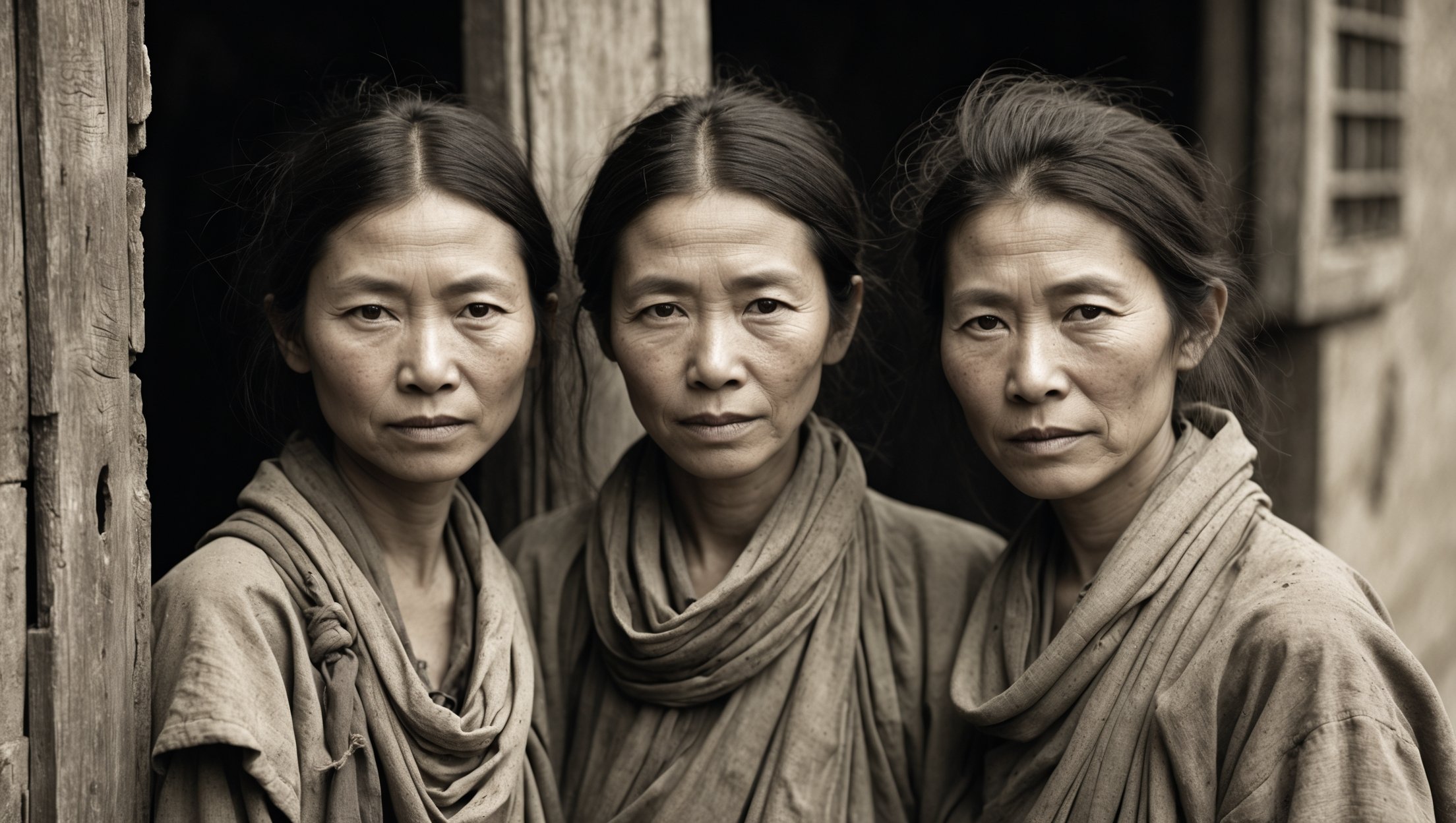
Articles

Mexican States
Southwest United States
Heritage and Governance
Resources for Tracing Your Spanish Ancestors in Colonial Mexico
The following presentation offers suggestions for tracing your Mexican ancestors back to Spain or Portugal. Learn how to navigate key databases and archives that reveal not only where your ancestors lived in Mexico but also trace their journeys back to specific regions in Spain or Portugal. Learn about tools that identify conquistadores, missionaries, and settlers who shaped communities across Nueva España.
Mexican Colonial Migration as a Catalyst for Assimilation (1550-1821)
For centuries, Mexico has led the world in silver production. In 1546, during Mexico’s colonial period, silver was first discovered in Zacatecas, but many more mines would be opened up in the next two centuries. According to Michael M. Swann, “Migrants in the Mexican North,” the “silver centers attracted large, mixed populations from great distances.
The Chinese Experience in Mexico
Discover the rich and complex history of Chinese immigration to Mexico. From the Manila Galleon trade in the 1570s to modern-day communities like La Chinesca, we delve into the contributions, challenges, and cultural integration of Chinese immigrants over centuries.
Lagos de Moreno: The Gateway to Jalisco
Lagos de Moreno, located in the northeast corner of the Mexican state of Jalisco, is an important commercial hub in the central Mexico region. While Aguascalientes lay eighty miles to the northwest, the city of Leon (in Guanajuato) is only forty miles to the east, and Mexico City is 445 miles to the south. Lagos de Moreno represents one of the twenty-four municipios that makes up the Los Altos region of Jalisco, an area that is defined by its socioeconomic and geographic nature and shares a common cultural history.
Exploring Ethnicity in Mexico Today
Mexico’s 2020 Population and Housing Census was conducted in March 2020. More than 147,000 interviewers traveled the nearly two million square kilometers of the national territory, visiting all Mexican households to obtain information about the demographic, socioeconomic and cultural characteristics of the people of each state.
The Yaqui Arizona Diaspora
Many Yaquis came to Arizona either alone, in small family groups, or as unrelated groups who shared a common heritage. The Yaquis followed the Southern Pacific Railroad tracks establishing the first Yaqui communities in the Tucson area. Many continued to journey north, following the railroad tracks and establishing communities in Marana, Eloy, Sacaton, Phoenix, Yuma.
Mexico’s Endangered Languages
Writing in El Economista on July 8, 2024, Ricardo Quiroga recently asked the question (translated into English): “What are the challenges, plans and commitments acquired by the incoming federal administration in Mexico, headed by the President-Elect Claudia Sheinbaum Pardo, regarding indigenous languages?”[1] Quiroga noted that the new Mexican Government headed by the climate scientist and former Mexico City Mayor Claudia Sheinbaum would serve “a self-identified indigenous population of 25.7 million people” [According to the INEGI 2020 Population and Housing Census]. This population represents 21.5% of the total population in the country.
The Origin of Náhuatl and the Uto-Aztecan Family
Náhuatl is one of the most spoken indigenous languages in the Americas with over 1.7 million speakers and is part of the Uto-Aztecan (UA) family language. A language family that historically spanned from the US state of Idaho down to Northern Costa Rica. This family contains a variety of different languages that all came from a common ancestor thousands of years ago. Over the years various migrations occurred and groups eventually diverged from each other and started to become their own independent culture and language.
Researching Otomí Roots in San Luis Potosí
Tracing an indigenous family across the generations is challenging, but it is definitely possible when the records you are exploring are indexed. In order to provide your links to the past, you want to find as many direct bloodline ancestors as possible, but it is good to also find the records of collateral ancestors [siblings of your ancestors]. Sometimes, the records of siblings can be useful in assembling your lineage. The baptism of the sibling may be more readable and more detailed than the baptism of your direct ancestor.
How Many Languages Are Spoken in Mexico?
This article discusses the age-old question of how many languages are spoken in Mexico? The answer is not an easy one because none of the sources are in agreement about that topic. This article will discuss INALI’S three-tiered approach to Mexico’s languages, as well as the estimates provided by other sources.
Spanish Immigration to Mexico
From 1521 to 1821, Mexico was a colony of Spain. During this period, hundreds of thousands of Spaniards crossed the Atlantic to begin new lives in the Americas. But the newly independent nation of Mexico – bitter from three centuries of sometimes oppressive colonial rule – enacted legislation to ban and expel many Spanish immigrants. However, relations between Spain and Mexico improved after Spain recognized Mexico’s independence (1836). Recognizing the similarities of their linguistic and cultural heritage, millions of Spaniards would make their way (or flee) to Mexico during the next century-and- a-half.
Tracing One Mixed-Race Family Across the Generations
This article explores the genealogy and history of a mixed-race family within its historical context. It includes discussions of past events, social norms, and terminology that were used during different periods. We approach these historical aspects with the intention of providing historical insights. We aim to foster understanding of diverse historical experiences while respecting sensitivities.
Understanding the Mexican Casta System: A Historical and Cultural Perspective
Before delving into the historical intricacies of the Mexican Casta system, it is crucial to acknowledge the sensitive nature of this topic. The Casta system, with its complex layers and implications, was a product of colonial rule that deeply influenced societal structures and racial perceptions. Studying this part of history is not an endorsement of its principles but a recognition of its significant impact on the formation of modern Mexican society and culture. Understanding our past, however uncomfortable, is essential for appreciating the diversity and resilience of cultures shaped by historical events.
Ethnic Identity in the 2020 Mexican Census
Mexico’s 2020 Population and Housing Census was conducted in March 2020. More than 147,000 interviewers traveled the nearly two million square kilometers of the national territory, visiting all Mexican households to obtain information about the demographic, socioeconomic and cultural characteristics of the people of each state. Finally, in January 2021, Mexico proudly became the first country in the world to announce the results of its 2020 census. The censuses of many other countries had to be delayed or postponed because of the COVID Pandemic.
An Indigenous Family from Ayutla, Jalisco
Exploring the genealogy of an Indigenous family in Ayutla, Jalisco, throughout the 17th and 18th centuries highlights the vital role of post-1800 baptism records from Jalisco in advancing genealogical research. Ayutla, situated within Jalisco, was home to Indigenous communities fluent in Náhuatl and Cuyuteco languages. This journey reveals intriguing patterns, where some Indigenous individuals maintained consistent surnames across generations, while others embraced surnames solely upon marriage or the birth of their children.
European Immigration to Mexico
According to Professor Jürgen Buchenau, Mexico has proven to be a "salad bowl," instead of a "melting pot“ mainly because "most immigrant families sought to retain their native languages and customs.“ Many of the European immigrant groups in Mexico – with the possible exception of the Spaniards – formed “enclaves” in which they could maintain their own cultural integrity.
Indigenous Mexico and the Spanish Language
Today, more than 7 million of Mexico’s 126 million people speak 364 Indian linguistic variants (dialects), but almost 90% of those people are bilingual, speaking both Spanish and an Indigenous language. Those who do not speak Spanish are called monolingual.
Mexico’s Great Diversity in the 2020 Census
When Spanish soldiers arrived in Mexico in 1519, native people ranged through every part of the country that was eventually made into a colony of Spain. It is estimated that at least 200 languages were spoken through this entire area at the time.
The Germans and French in Mexico
According to Professor Jürgen Buchenau, Mexico has proven to be a "salad bowl," instead of a "melting pot“ mainly because "most immigrant families sought to retain their native languages and customs.“ Two of the largest immigrant groups in Mexico were the Germans and the French and many of them formed “enclaves” in which they could maintain their own cultural integrity.
The Indians of Southern California’s Interior
“The Indians of Southern California’s Interior” will explore the Native American people that inhabited Southern California’s mountains and deserts. While the Spanish mission system dominated the coastal area, the interior of California was settled more slowly and the conquest of these inland Indians took more time. Today, nearly three dozen Indian reservations lie within this area. The region from San Diego to San Bernardino counties will be discussed.

Article Categories
- Aguascalientes 14
- Arizona 4
- Baja California 6
- Baja California Sur 2
- California 16
- Campeche 5
- Census 34
- Chiapas 4
- Chihuahua 14
- Coahuila 8
- Colima 1
- Conquistador Chronicles 2
- Durango 2
- Ethnic Identity 37
- Genealogy 34
- Guanajuato 8
- Guerrero 8
- Hidalgo 2
- Indigenous Insights 92
- Jalisco 25
- Mexico City 11
- Michoacan 7
- Morelos 4
- Nayarit 3
- New Mexico 3
- Nuevo Leon 7
- Oaxaca 6
- Politics 10
- Puebla 5
- Queretaro 1
- Quintana Roo 5
- San Luis Potosi 11
- Sinaloa 6
- Sonora 17
- Southwest US 24
- State of Mexico 6
- Tabasco 4
- Tamaulipas 11
- Texas 6
- Tlaxcala 7
- Veracruz 7
- Yucatan 6
- Zacatecas 13





















